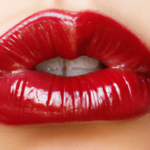If you’re someone who loves playing with makeup, then chances are you have a collection of makeup brushes that you rely on to create your flawless looks. But have you ever stopped to think about how often you clean those brushes? Keeping them clean is not only essential for maintaining healthy skin, but it also ensures that your makeup applies smoothly and evenly. In this article, we’ll explore the best way to clean makeup brushes, so you can keep them in tip-top condition and continue to slay your makeup game.
Why Clean Makeup Brushes?
Cleaning your makeup brushes regularly is an essential step in your beauty routine. Not only does it help prevent breakouts and skin irritation, but it also maintains the performance and longevity of your brushes and prevents color mixing or product contamination. By keeping your brushes clean, you ensure that every application is flawless and that your skin stays healthy and radiant.
Prevent Breakouts and Skin Irritation
Throughout the day, our brushes accumulate dirt, oil, and bacteria from our skin, which can lead to clogged pores, breakouts, and skin irritation if not properly cleaned. When these impurities accumulate on the bristles of your brushes, they can easily transfer back onto your skin with each use. By regularly cleaning your brushes, you remove these impurities and reduce the risk of skin issues, allowing your skin to breathe and remain clear.
Maintain Brush Performance and Longevity
Makeup brushes are an investment, and just like any other tool, they require proper care to maintain their performance and longevity. Over time, makeup products can build up on the bristles, causing them to become stiff or lose their shape. Regular cleaning helps to remove these residues and keeps the bristles soft and flexible, ensuring optimal performance every time you use them. By taking care of your brushes, you extend their lifespan and save money in the long run.
Avoid Mixing Colors and Contaminating Products
Have you ever applied eyeshadow only to find that it picked up unwanted pigment from a previous color? This often happens when brushes are not cleaned between uses, leading to color mixing and a less precise application. Additionally, if you use brushes for different products, such as cream and powder-based products, failure to clean them properly can lead to cross-contamination, affecting the quality and performance of your makeup. By cleaning your brushes regularly, you avoid mixing colors and contaminating your products, ensuring that each application is true to its intended shade.
Basic Brush Cleaning Tools and Supplies
Before diving into the cleaning process, gather the essential tools and supplies that will make cleaning your makeup brushes a breeze.
Gentle Liquid Soap
Start by choosing a gentle liquid soap specifically formulated for cleaning brushes. Avoid harsh detergents or soaps that may strip the natural oils from the bristles, causing them to become dry and brittle. Look for a mild cleanser that effectively removes makeup residue while keeping the bristles soft and supple.
Olive Oil or Coconut Oil
In addition to a liquid soap, having a natural oil like olive oil or coconut oil on hand can be beneficial, especially for deep cleaning stubborn product buildup. These oils are gentle yet effective at breaking down dry or waxy product residues, leaving your brushes squeaky clean.
Cleaning Mat or Brush Egg
Investing in a cleaning mat or brush egg can significantly simplify the cleaning process. These textured tools help to agitate the bristles, ensuring a thorough and efficient cleaning. The ridges and bumps on the mat or egg help to dislodge trapped dirt and makeup, providing a deeper cleanse.
Towel or Tissue Paper
Having a towel or tissue paper nearby is essential for drying your brushes. After cleaning, you’ll want to gently squeeze out any excess moisture and reshape the bristles. Placing the brushes on a clean towel or tissue paper allows them to air dry properly, preventing any potential damage or deformation.
Frequency of Cleaning
Now that you have your cleaning tools ready, it’s important to understand how often you should clean your makeup brushes. Cleaning frequency depends on how frequently you use your brushes and the types of products you apply.
Daily Spot Cleaning
If you’re a daily makeup user, spot cleaning your brushes should become a regular part of your routine. Spot cleaning involves quickly removing excess product from the brush after each use, keeping it fresh and ready for your next application. You can use a brush cleanser specifically designed for spot cleaning, or you can opt for alcohol or makeup remover to disinfect and remove any residual product.
Weekly Deep Cleaning
To maintain the condition and cleanliness of your brushes, a weekly deep cleaning is recommended. Deep cleaning involves a thorough cleanse that removes all traces of makeup, dirt, and oils from the bristles. This process allows your brushes to perform optimally and prevents any unwanted buildup. Aim to set aside some time each week to dedicate to deep cleaning your brushes, ensuring they are always in top-notch condition.
Additional Cleanings for Specific Products
Certain makeup products, such as foundation and concealer brushes, may require more frequent cleaning due to their direct contact with the skin and the nature of the product itself. These products can transfer oils and bacteria onto the bristles, making them prone to buildup and contamination. Be aware of the specific brushes that require extra attention and incorporate additional cleanings as needed.
Spot Cleaning Methods
Spot cleaning your brushes is a quick and convenient way to keep them clean in between deep cleanings. There are several methods you can use, depending on the tools available to you.
Using Brush Cleanser
Brush cleansers are specifically formulated to effectively remove makeup residue and sanitize brushes. To spot clean, simply spray or pour a small amount of the cleanser onto a tissue or directly onto the bristles. Gently swirl the brush on the tissue in circular motions until you no longer see any residue. Be sure to reshape the bristles and let the brush air dry before storing or using it again.
Using Alcohol or Makeup Remover
If you don’t have a brush cleanser on hand, you can use rubbing alcohol or makeup remover as an alternative. Dampen a cotton pad or tissue with alcohol or makeup remover and gently swipe the brush back and forth until the bristles appear clean. Remember to reshape the bristles and allow them to air dry completely before storing or using the brushes again.
Deep Cleaning Methods
When it comes to deep cleaning your brushes, there are various methods you can choose from, depending on your preferences and the products available to you. Here are a few effective deep cleaning methods to consider:
Using Olive Oil and Liquid Soap
One popular deep cleaning method involves combining olive oil and liquid soap to remove stubborn makeup residue. Start by dampening the bristles with lukewarm water, being careful not to wet the handle or ferrule. Mix equal parts olive oil and liquid soap in the palm of your hand or on a cleaning mat, and swirl the brush in the mixture until it lathers. Rinse the bristles thoroughly under running water, gently squeezing out any excess soapy water. Reshape the bristles and lay the brush flat to air dry.
Using Dish Soap and Olive Oil
If you don’t have liquid soap on hand, you can substitute it with mild dish soap. Begin by creating a mixture of dish soap and olive oil in a small bowl. Dip the brush into the mixture and swirl it around, ensuring that it gets into all the bristles. Rinse the brush thoroughly under running water, gently squeezing out any soapy residue. Reshape the bristles and lay the brush flat to air dry completely.
Using Baby Shampoo
Baby shampoo is another excellent option for deep cleaning your brushes, as it is gentle enough to clean the bristles without causing any damage. Wet the bristles with lukewarm water and apply a small amount of baby shampoo to your hand or a cleaning mat. Swirl the brush in the shampoo until it lathers, paying attention to thoroughly clean the bristles. Rinse the brush thoroughly, squeezing out any excess water. Reshape the bristles and lay the brush flat to air dry completely.
Using Brush Cleanser
For a quick and effective deep clean, you can also use a brush cleanser specifically designed for deep cleaning. Follow the instructions provided on the cleanser bottle, as different brands may have slightly different application methods. Generally, you will wet the bristles, apply the cleanser, and massage it into the bristles until you see the makeup residue being removed. Rinse thoroughly and lay the brush flat to dry.
Brush Drying Techniques
After cleaning your brushes, it’s important to let them dry properly to prevent any potential damage or deformation of the bristles. Here are a few brush drying techniques to ensure your brushes maintain their shape and performance:
Air Drying
The most common and simplest way to dry your brushes is to let them air dry naturally. Once you have finished cleaning your brushes, gently squeeze out any excess water and reshape the bristles. Lay the brushes flat on a clean towel or tissue paper, ensuring there is enough space between each brush to allow for proper air circulation. Avoid placing the brushes upright, as this can cause water to seep into the ferrule, loosening the adhesive and potentially ruining the brush.
Using Brush Guards or Hair Ties
If you want to speed up the drying process and help your brushes maintain their shape, you can use brush guards or hair ties. After reshaping the damp bristles, slide a brush guard or hair tie over the bristles, starting from the handle and moving towards the tip. This allows the bristles to stay in place and retain their original shape as they dry. Place the brushes on a flat surface, ensuring they are not touching each other, and let them air dry completely.
Using Spin Brush Dryer
If you’re looking for an efficient and convenient way to dry your brushes, you can invest in a spin brush dryer. These devices rotate the brushes at high speeds, quickly removing excess water and speeding up the drying process. Simply attach the brush to the designated holder, turn on the device, and let it do the work. However, be cautious when using spin brush dryers, as excessive heat or friction can damage the bristles. Always follow the manufacturer’s guidelines and use the dryer sparingly to avoid any negative effects.
Tips and Precautions
While cleaning your makeup brushes is fairly simple, there are a few tips and precautions to keep in mind to ensure the best results and maintain the longevity of your brushes.
Avoid Submerging Brush Ferrules
When cleaning your brushes, it’s crucial to avoid submerging the brush ferrules (the metal or plastic part that holds the bristles) in water. Excessive moisture can cause the adhesive to weaken, leading to shedding bristles and a shorter lifespan for your brushes. Instead, focus on cleaning the bristles themselves while being cautious around the ferrule area. Dampen the bristles without fully wetting the handle or ferrule to minimize the risk of damage.
Do Not Dry Brushes with Bristles Upward
After cleaning your brushes, always remember to lay them flat to dry, with the bristles facing downward. Hanging the brushes or placing them upright can cause water to drip into the ferrule, leading to damage and potentially ruining the brush altogether. By letting the bristles hang freely and air dry, you ensure that excess moisture drains away from the ferrule, keeping your brushes in excellent condition.
Avoid Excessive Heat
While heat can speed up the drying process, it can also damage the bristles of your brushes. Excessive heat can cause the bristles to become dry and brittle, leading to breakage and a shorter lifespan. Avoid using heated appliances such as hairdryers or placing your brushes near direct heat sources. Opt for air drying or using drying techniques that do not involve heat to protect your brushes and maintain their quality.
Check Manufacturer’s Guidelines
Each brush may require different cleaning methods and have specific care instructions provided by the manufacturer. Before cleaning your brushes, it’s a good idea to check for any specific guidelines or recommendations. Different bristle materials or brush types may have unique requirements, and following the manufacturer’s instructions ensures that your brushes remain in the best possible condition.
Cleaning Alternatives
If you find yourself without the recommended cleaning supplies, there are a few alternative methods you can try to keep your brushes clean and sanitary.
Bar Soap or Shampoo
In the absence of liquid soap or brush cleanser, you can use a mild bar soap or shampoo to clean your brushes. Wet the bristles, lather them up with the soap or shampoo, and gently massage the bristles to remove makeup residue and dirt. Rinse the brushes thoroughly, reshape the bristles, and let them air dry completely. While not as effective as specialized brush cleansers, bar soap or shampoo can still provide a decent clean in a pinch.
Microwave Method
If you need to quickly sanitize your brushes, you can try the microwave method. Please note that this method is best suited for synthetic brushes and not recommended for natural hair brushes, as the heat can damage the bristles. Dampen the bristles, place the brushes in a microwave-safe container with water and a mild soap, and microwave for approximately 30 seconds. Take caution when removing the brushes from the microwave, as they may be hot. Rinse thoroughly, reshape the bristles, and let the brushes air dry completely before use.
UV Sanitizing
For an extra level of cleanliness, you can invest in a UV sanitizing device. These devices use UV light to eliminate bacteria and germs on your brushes. Simply place the brushes in the device, following the manufacturer’s instructions, and let the UV light do its job. This method is quick, effective, and ideal for those who want to ensure their brushes are thoroughly sanitized.
Storing Clean Brushes
Once your brushes are squeaky clean and fully dry, it’s important to store them properly to maintain their cleanliness and condition. Here are a few storage options to consider:
In a Brush Holder or Organizer
Investing in a brush holder or organizer is a great way to keep your brushes in one place while protecting them from dust and potential damage. These holders can come in various sizes and designs, allowing you to arrange your brushes according to your preferences. They keep the bristles upright, preventing any deformation, and provide easy access to your brushes during your daily makeup routine.
In Protective Cases or Pouches
If you frequently travel or prefer to keep your brushes tucked away, consider investing in protective cases or pouches. These cases provide an extra layer of protection, ensuring that your brushes stay clean and undisturbed while on the go. Look for cases with individual compartments or sleeves to prevent the brushes from touching each other and potentially causing damage.
Final Thoughts
Cleaning your makeup brushes should be a regular and non-negotiable part of your beauty routine. Not only does it help prevent breakouts and skin irritation, but it also ensures that your brushes perform optimally and that your makeup application remains precise and flawless. By following the recommended cleaning methods, using the right tools and supplies, and storing your brushes properly, you can maintain clean and pristine brushes that will last you for years to come. So, don’t neglect the care of your makeup brushes – your skin and makeup application will thank you!



